A guest blog by Bart de Schutter
In November/December 2012 a friend of mine visited Oman on a birding and photographing trip. Looked like a nice country for birding to me, but I was not really inspired. Not yet. My friend’s first trip was that good that he decided to return in the same period in 2013. By then, I had informed myself a bit more about this Middle East country, about which we receive hardly any news here in West-Europe. And as I was wondering where to spend a week of my Christmas & New Year holiday in the 2013/2014 winter, I decided to give it a try as well to go to Salalah and surroundings, in the Dhofar Governate.
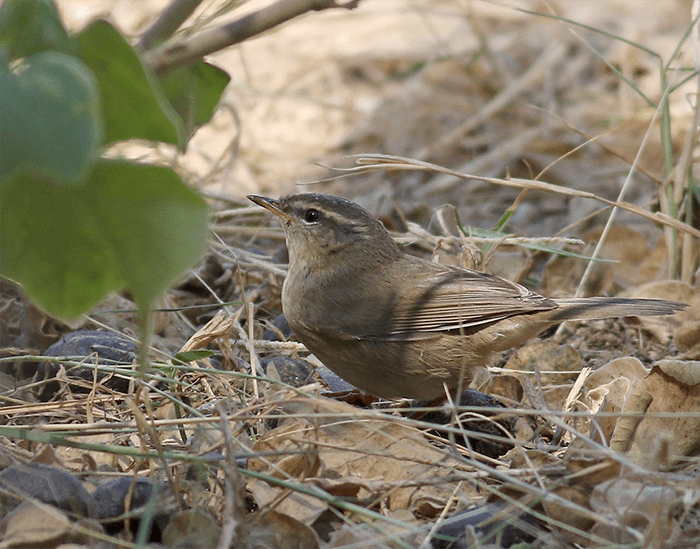
The first three trips
The experience was excellent. Oman is a very safe country with friendly people – both the Omani’s and the immigrants – good roads and infrastructure, very decent mobile coverage, good food, cheap fuel and of course splendiferous birding. The “I-want-to-go-birding-Oman-as-much-as-possible-virus” got to me. I returned with a friend in October/November 2014 for two weeks and that turned out to be another great birding trip to Dhofar.
And in February 2015 I went back on my own. This time for three weeks and with the intention to cover most of the country and as many of the birding hotspots as possible. From Salalah I started at the much under-birded area around Dhalkut and Rakhyut, then taking route 31 all the way to Nizwa in the North, following the coast up to the border with the U.A.E., going back via Muscat and via Filim and along the coastal roads back to Salalah. A splendid trip once again.
The fourth trip: the best ever
But my fourth trip to Oman, last November, was by far the best. It was as good, or better, than the three previous trips combined. It was even the best birding trip in my life so far. The itinerary was flexible and only made in my head just before departure. Instead of a tight itinerary I wanted to have freedom to choose where and when I would go to a destination. I had been to most hotspots and this knowledge suited me very well for my day to day planning.
Masirah Island was a destination that I had in mind. So the trip evolved in starting around Salalah, following the coastal roads up North-East, crossing the sea to Masirah and then turning back to Salalah via different desert hotspots.
Starting at Salalah
After a sleepless night on airplanes and in airports, my first day in Oman (9 November) wasn’t memorable. The second day I teamed up with Robert Tovey, a friend who is an English teacher and lives and works in Salalah. There was a report of a Raddes’ Warbler at Wadi Al Mughsayl. It turned out to be a Dusky Warbler, only the third record for Oman (‘if accepted’, we need to add). The bird was present near a pool (Dusky Warblers generally like to be near water) with a tiny reed bed and a few trees and bushes. Yet, this rather small patch is in fact a very good one.
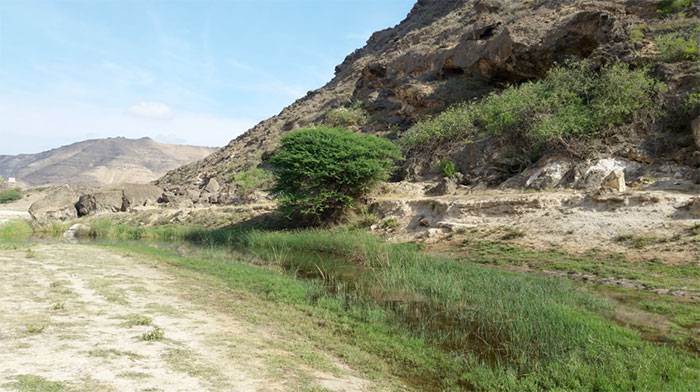
Wadi Al Mughsayl is the best spot I know of in Dhofar to see Striolated Buntings. In winter the reedbed holds Baillon’s Crakes and over the years I’ve seen Little and Yellow Bittern, Broad-billed Sandpiper, Verraux’s Eagle, Arabian Golden-winged Grosbeak, Yellow-browed Warbler, Pin-tailed Snipe and White-Breasted Waterhen here. We enjoyed good views of two Baillon’s Crakes and a Yellow Bittern.
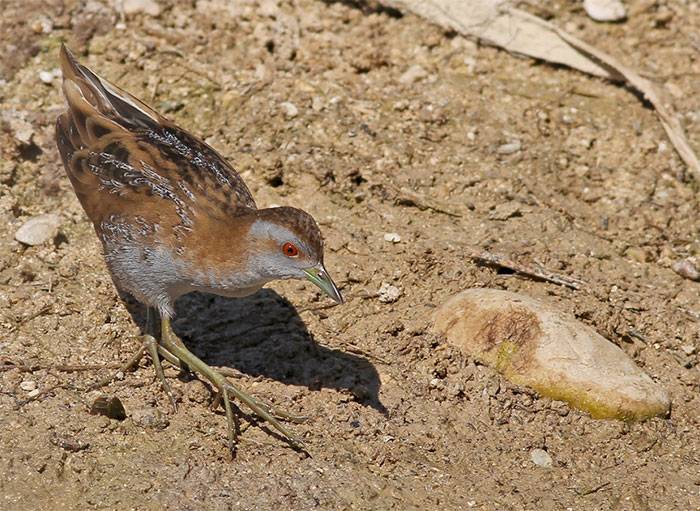
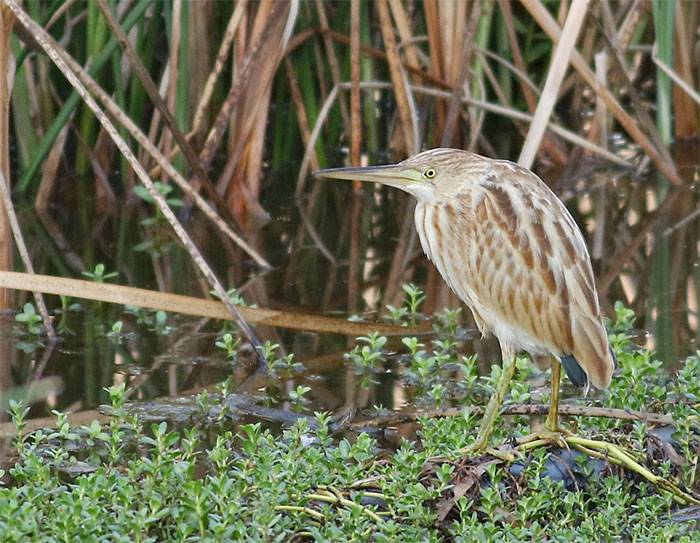
In the afternoon we headed for the sewage works, a relatively small but excellent area for birds in Raysut, the industrial part of Salalah. ‘Normal’ tourists would never go to this area, where the smell of waste water tickles your nose, but for birders it is a great area (any sewage works in Oman should be really good for birds). The overspill of water attracts loads of insects and creates grassy areas, in turn creating refuge and foraging changes for many birds. Pin-tailed Snipes, Spur-winged Plover, Namaqua Dove, Abdim’s Storks and further lots of wagtails, waders, ducks, raptors etc. were present.
At night I camped at one of my favourite camping sites: Wadi Darbat. The first (and only) bird I saw in the dark was a Spotted Eagle Owl. And Arabian Scops Owls were heard, there sounds coming from all directions.
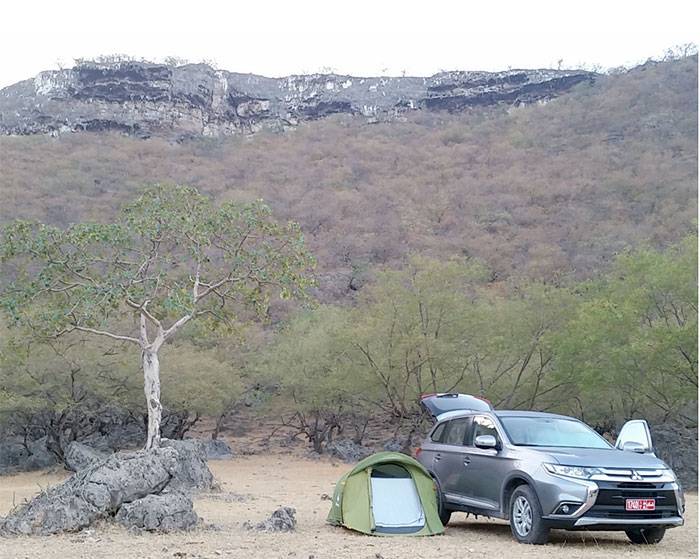
I wasn’t planning to stay long in Salalah and was eager to head for Masirah Island. In the few days that I stayed in Salalah some good birds were seen, such as Long-toed Stint at East Khawr, Verraux’s Eagle at Wadi darbat, Ortolan Bunting at the sewage works and a male Masked Shrike and an Arabian Golden-winged Grosbeak at Ayn Hamran.
Masirah Island
Fast forward to Masirah Island. I took the ferry on the mourning of 15 November. The trip costs 8 rial (including my car on one of the older ferry types) and takes 1 1/2 hours for the crossing, not counting the time you have to wait before the ferry is full and departs.
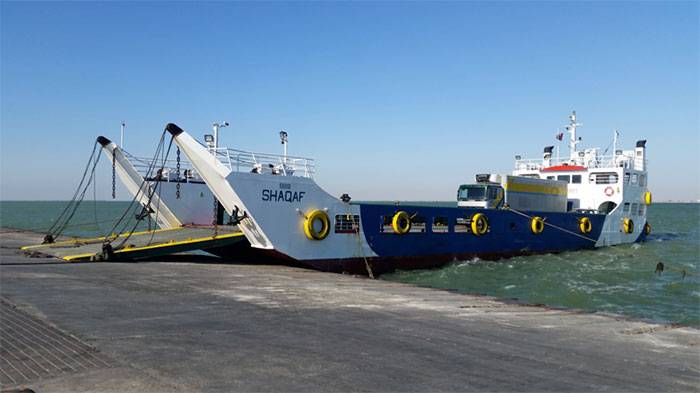
Arriving at Hilf on Masirah at 11h50, I was very eager to head to the sewage works as soon as possible. Alas, it turned out I just missed Hanne and Jens Eriksen, who were on their way back to the mainland at precisely that time. Jens gave very useful tips about the sewage works on the phone during my drive to this great birding spot.
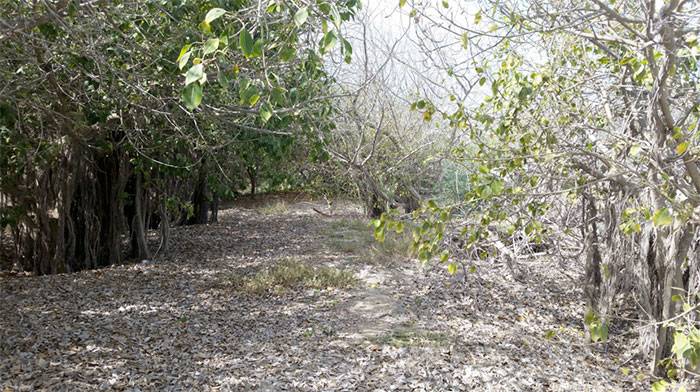
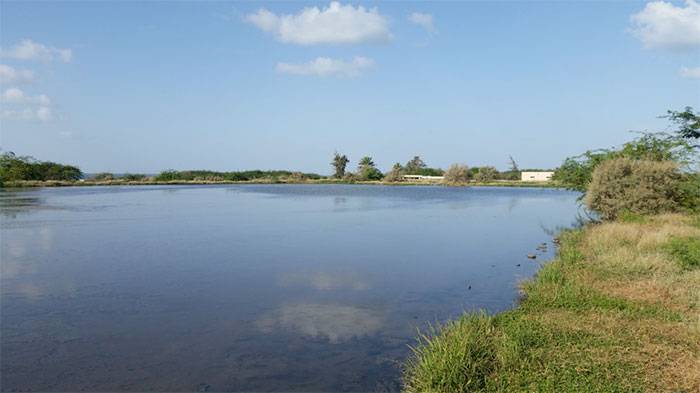
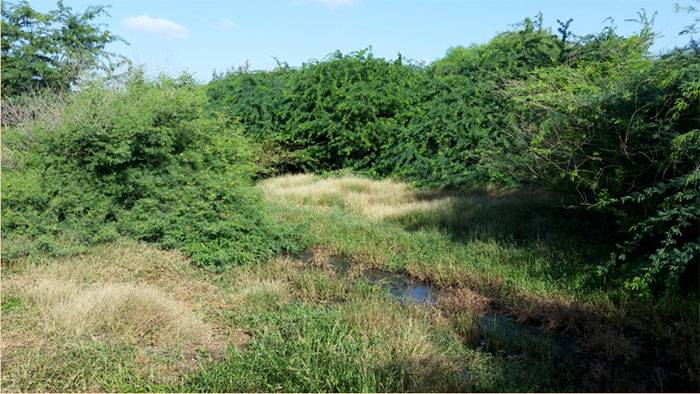
Good birds popped-up right away. A Pied Wheatear being one of the first. Some time later on that day I saw an Eastern Black-eared Wheatear on the other side of the area, a rare passage migrant in Oman.
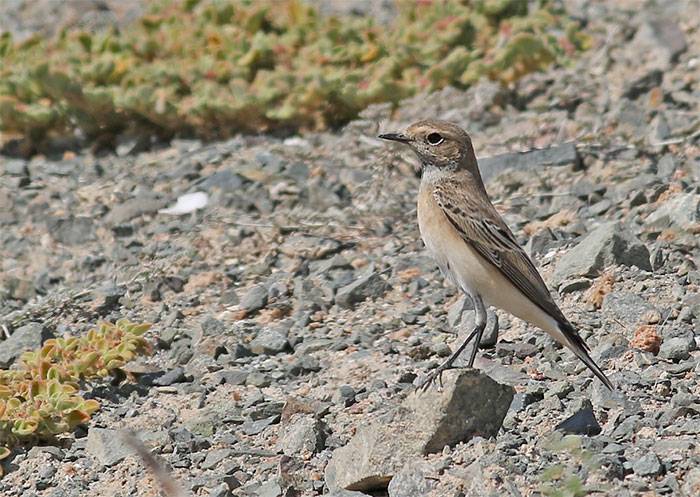
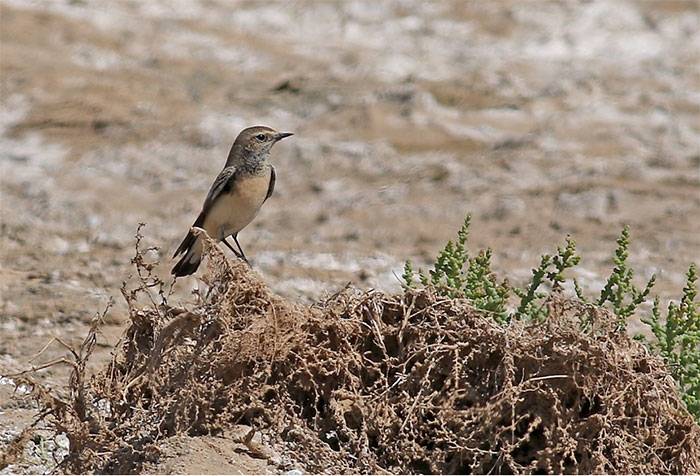
Sightings of an adult male Amur Falcon, resting in a tree, were much enjoyed too. Top of the bill was, of course, the White-throated Kingfisher. This was Oman’s first and was discovered early November by Breght Vandenberghe.
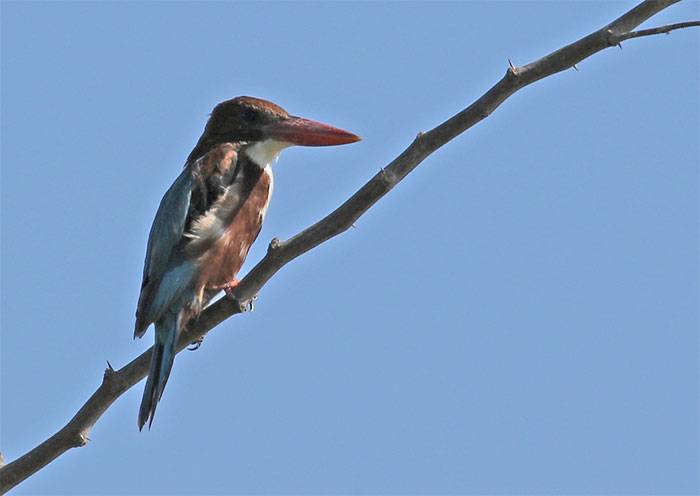
In the following days I visited the sewage works every morning. Some days were better than others, but there was always a variety of birds and many different and new birds turned up, including Pin-tailed Snipe, Oriental Turtle Dove, Namaqua Dove, Asian Koel, Indian Pond Heron, White-breasted Waterhen, Rosy Starling, and Red-backed Shrike. The best bird was a Wire-tailed Swallow. Although I did see the bird relatively well on two occasions in the morning (one time with a group of four Hungarian birders – the only other birders I saw on Masirah) the only swallow that I managed to catch on camera was a Barn Swallow! However, I returned in the evening and was able to get very good views and some decent pictures of this Oman rarity.
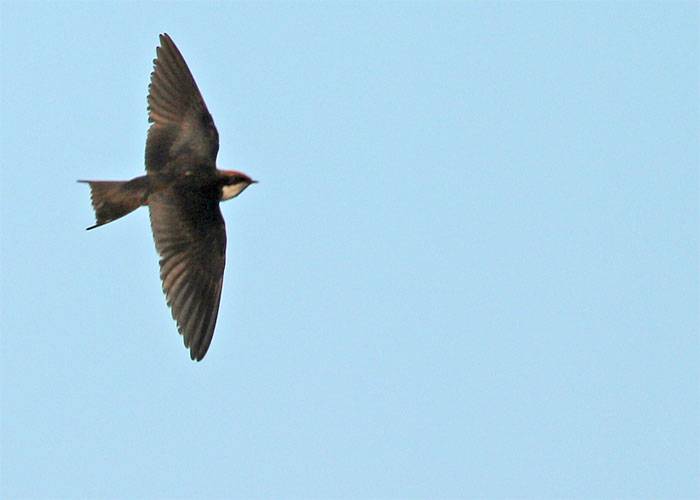
Some sea-watching in the mornings and afternoons at Masirah Island did not produce any outstanding observations, but both Arctic and Pomarine Skua and some Flesh-footed and Persian Shearwaters deserve to be mentioned.
The desert sites
Masirah Island is a great destination. If I would have stayed longer, it would be guaranteed that I – or any other birder – would have found more good birds and most probably more rarities. I was already more than halfway through my three week trip and had to leave. I drove straight to the Al Ghaftayn Hotel, next to the Salalah – Muscat highway. Just before dusk I saw Red-breasted Flycatchers and a Wryneck in the hotel garden.
The next day, 21 November, was the first in yet another series of amazing sightings of birds. It started at the Al Ghaftayn Hotel garden with a Yellow-browed Warbler. This Phylloscopus is apparently rarer than Hume’s Leaf Warbler in Oman and I must admit that I mistakenly identified it as the latter at first. Only after consulting photos it was clear that it was a (silent) Yellow-browed Warbler.
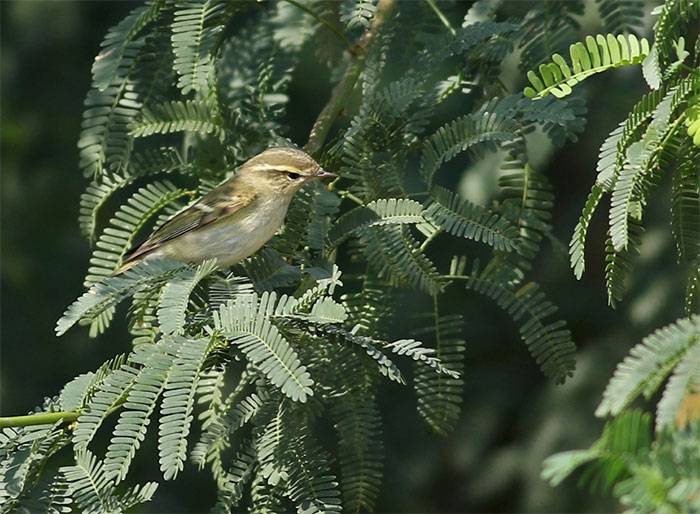
Another good bird was a Jacobin (or Pied) Cuckoo. It can sometimes be seen in reasonable numbers in Oman. It was the only one I saw on this trip. And the only Song Thrush of the trip was in the same bush!
My next destination was planned to be Qatbit, a famous desert site where lots of rarities have turned up. But another friend, Mike Watson, advised me to check a wadi along the way. I’ve met Mike in October 2014, whilst he was leading a birding trip in Oman for BirdsQuest. His decisive leadership and deep knowledge about birds, knowing when, where, how to find them and identified them, made quite an impression on me.
So I took his suggestion to check out the wadi North of the town of Muqshin. The wadi, where there was plenty of water in some pools – others being dry – is a part of a long strip of trees. It’s a great camping site as well. The water seemed, alas, completely lifeless. A few waders were the only water related birds. There weren’t too many species here on this occasion, yet it was a worthwhile visit. The area held a few Asian Desert Warblers and Lesser Whitethroats. A slight surprise was several Plain Leaf Warblers which I had not seen in this part of Oman before. By far the best bird was a Yellow-breasted Bunting. Jens told me that it was the first sighting of this species in years. Sadly it is known for being trapped and eaten in Asia and as a result of that the numbers of this once abundant bird have declined rapidly and it is now considerate endangered. So I was very pleased to come across one in Oman.
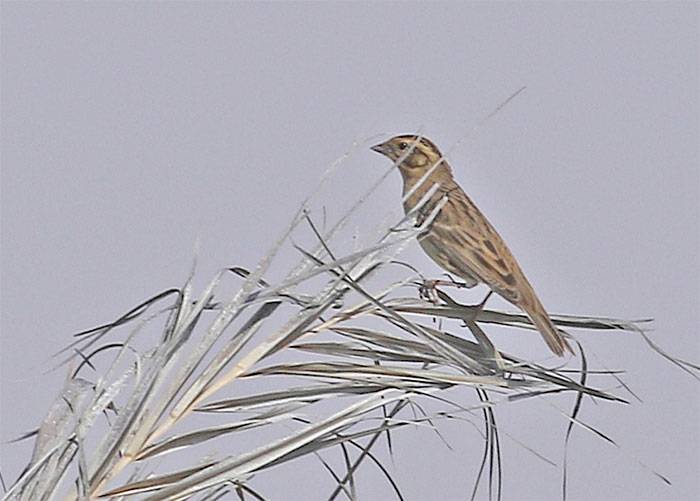
So this little deviation proved to be worthwhile. I would suggest others to have a look here when driving along route 31 between Al Ghaftayn and Qatbit. The latter was my next destination. The garden of the Qatbit Guesthouse is larger and much more wooded than that of the Al Ghaftayn Hotel. As usual I parked my car at the guesthouse (most of the time it’s an empty car park anyway) and started birding the area behind it. After about 10 minutes or so I came across a bird for which I was searching at the sewage works on Masirah. I did not expect to see one at Qatbit, but there it suddenly was: Forest Wagtail (I did not make the discovery as it was seen by others the prior day, but I did not know that at the time). Bingo!
A Belgian birder, Eric Cuvelier, discovered a Forest Wagtail in the Ad Dahariz Park (also known as East Khawr Park), which Robert saw as well, while I was on Masirah. So ‘finding’ one myself brought great pleasure and an adrenaline shot. I was so excited that I started texting to Robert and Jens, not realising in this moment of ecstasy that they of course would not come to see it. And I tweeted about it, too. Whilst spending time on my phone, I did not follow the bird and did not attempt to make any photographs. Joy was replaced by frustration. Who’s gonna believe me, having seen it for only a few seconds and without photographic proof? Alas, I was not able to find the wagtail again and the site was now occupied by workers. So I gave up.
I drove to the Muntasar oasis, a really great site not far from Qatbit. Unfortunately there is a permanent resident shepherd with dozens of dromedaries. Though very friendly, the non-English speaking shepherd quickly insisted that I move my car, as it might scare his animals, and also go birding at the back side of the oasis. It didn’t work out. I dropped the idea of putting up my tent here and returned to Qatbit. I camped at the small oasis, some 2 km South-East of the guesthouse. Water means mosquitoes, but I survived. I much enjoyed the European Nightjar that was hunting in the area and sat on the sand for a short while, providing nice views through my scope.
The desert farms
The next morning was the start of yet another excellent birding day. I started early at the Qatbit area. Several Black Redstarts, Lesser Whitethroats and some Bluethroats were present. I heard a Eurasian Siskin flying over – actually a vagrant in Oman. And suddenly there it was again, at precisely the same spot as the day before: the gorgeous Forest Wagtail. Leaving my phone in my pocket I now concentrated on making photos of this rare bird while it was consuming a large insect.

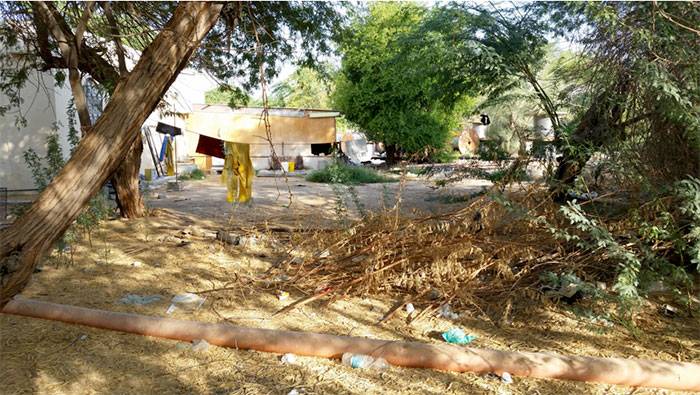
Mission accomplished. Frustration made room for joy. I heard the Siskin again. I knew it was not common in Oman, but did not realise it was a true vagrant. This time I saw it too, flying right over me. I could not find it perched, however, and didn’t put much effort into it as I’ve seen many thousands of Siskins in Western Europe – it ain’t special – but it actually is in Oman!
I moved on to the well known desert farms in Dhofar: Dawkah Farm, Al Beed Farm and Shisr Farm. Al Beed farm was good, with four Cream-coloured Coursers and three Caspian Plovers on one of the many fields. At Shisr, which is a coalition of several small and large fields (the green circles that you see on Google Earth), 2 Pied Wheatears, 5 Grey Hypocoliuses, a Long-legged Buzzard and a convincing, calling Hume’s Leaf Warbler were certainly once again nice sightings.

The next day, 23 November, was yet another great birding day. Initially, not much was seen (which is another way to say I didn’t look hard enough…) and I headed to Al Mazyunah. This is a town, about the size of Thumrayt, in the far West of Oman, next to the Yemen border. Krister Mild had been birding there in October and saw a lot of interesting stuff. Not to mention a Dunn’s Lark along the way, a species which I can safely call the most sought after species in Oman that almost nobody can find.
The trip from Shisr to Al Mazyunah would be about 140 km and 80 km of that was along a poor road. This is one of the very few long roads in Oman that has not been paved (yet). That means a bumpy and rather unpleasant ride. About 40 km South-West of Shisr I saw a small farm on the right side of this road. I was there in February and that farm wasn’t there at that time. Farms in the desert are a magnet to birds so I did not hesitate to take a look. That was a wise decision. The only worker there kindly allowed me to look around. The poor guy from Bangladesh worked and lived here all alone and he was covered with flies all day long. Yes, the farms also attracts billions of flies.
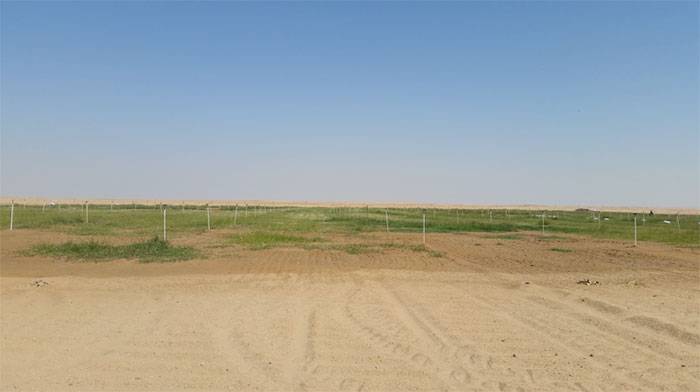
The worker was still seeding much of the area and parts were being irrigated. Lots of birds were feeding on the insects that were attracted by the wet soil or on the seeds. I estimated 75 Greater Short-toed Larks, 20 Black-crowned Sparrow-Larks, 4 Greater Hoopoe-Larks, 30 White Wagtails, 5 Red-throated Pipits, 25 Tawny Pipits and 1 Water Pipit. By far the best birds were 2 Bimaculated Larks and 1 Little Bunting.
The Far West
Around noon I moved on the Al Mazyunah. Of course, not without checking for Dunn’s Lark along the way. As you can guess, without any results. Arriving at the town at around 16h00 I headed for the sewage works. The first birds I spotted were 3 Trumpeter Finches which came to drink. That was a great start, as I presume not all visiting birders to Oman come across this species. There was a variety of birds present in the area: waders, ducks, pipits, wagtails and so forth. Good birds were 3 species of snipes (Common, Pin-tailed and 1 Jack), a Spotted Crake, Spotted Sandgrouse and Sand Partridges.
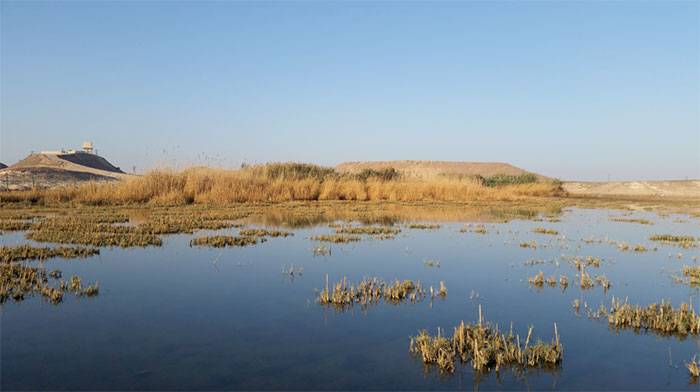
I decided to spend the night at Hotel Al Mazyunah, which charged only 20 rial. The next morning I returned to the sewage works and birded from 06h30 to 08h00. I probably left a bit too early, as I missed the sandgrouse which come to drink later, as I learned from Robert who visited the site a few days later. 2 Spotted and 1 Little Crake, Water Pipit and Egyptian Vultures were nice, but I now regret not spending more time here.
But I moved on and visited the new farm again. There were fewer birds on the farm, maybe because there was no irrigation taking place. Only the number of Bimaculated Larks increased to 4. Next I headed to Mudayy, a small village in the desert and the best place in Oman to see Grey Hypocolius. Another search for Dunn’s Lark along the way was unfruitful. I managed to see a handful of Grey Hypocolius but not really much else. So I decided to drive to Salalah, instead of camping at Mudayy. The idea of doing some sea-watching at Mirbat popped into my head, so I drove up to the beach of this coastal village and camped in the dunes.
Birding East of Salalah
The next morning I stood ready at the beach. It turned out to be very calm. Between 06h30 and 08h00 only 1 Persian Shearwater and 1 Flesh-footed Shearwater flew by, as did 2 Swinhoe’s Storm Petrels and rather close to shore. So that was nice.
Birding Wadi Darbat produced, of course among other birds, a Black Stork and 5 Griffon Vultures. In the evening I teamed up with Robert again and we did some crake spotting at Khawr Rawri. I managed to see the long staying Malachite Kingfisher, a rarity in Oman. There have been sighting of two individuals at this site. Crake spotting produced close views of 2 Baillon’s and 1 Spotted Crake.
The bingo day
On 26 November my holiday was slowly coming to an end. I had seen so many good birds and yet I regard this day as the best of the trip. I encountered 4 species that are rare to uncommon in Oman and 2 that were very rare (vagrants), apart from lots of other things for which people travel to this country. In the morning I went sea-watching at Mirbat again. There had been a fierce wind the afternoon before so who knows what might turn up. Well, it was bingo. Big time. From 06h15 to 08h30 is scanned the sea. Especially the first 45 minutes saw a continuous stream of seabirds passing by. My list of this mourning: 480 Persian Shearwaters, 214 Jouanin’s Petrels, 10 Swinhoe’s Storm Petrels, 1 Wilson’s Storm Petrel, 750 Red-necked Phalaropes and 2 Masked Boobies!
The next phase in this glorious day was a visit to Ad Dahariz Park. There I saw the Forest Wagtail that Eric discovered 10 days earlier. And the park also held 2 Crested Honey Buzzards. It’s a well know site for this species in winter.
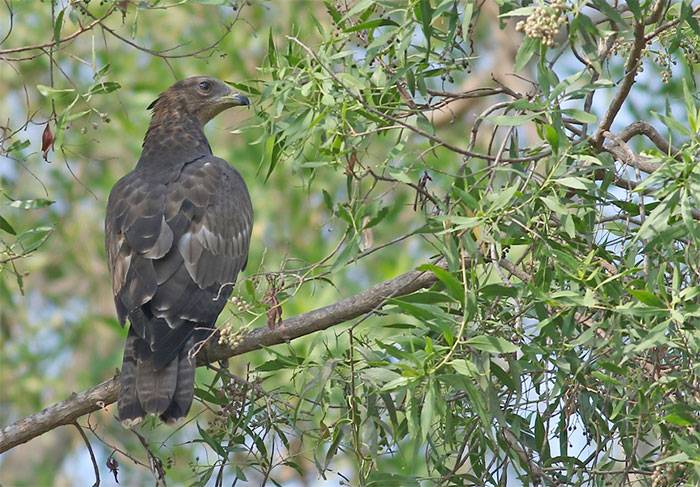
Checking East Khawr resulted in seeing 2 Broad-billed Sandpipers among the many stints and sandpipers present. A bit later I had distant climbs of what were most probably 2 Yellow-billed Kites, which have been reported at Ad Dahariz by others.
Time to head for the sewage works at Raysut. There were about 800 storks present at the site, some 500 White and 300 Abdim’s. And right away 2 Griffon Vultures flew over. I saw a bunting-like bird flying away and landing on the other side of the area. I got the feeling that something rare could be present here and decided to follow that bird to where it went down. No sights of it, but I saw my first ever Chestnut-shouldered Petronia (also called Yellow-throated Sparrow) in Oman. I texted Robert, for whom it was a new bird on his Oman list, too. It was around 13h00 and he called me back with the question if this bird would still be there at 14h30, as Robert had to work until 14h00. Might be, but I could not guarantee that, of course. We actually saw 3 when he arrived!
But the main surprise had yet to happen. And that was another Wire-tailed Swallow. Bingo! I knew it. Another text message to Robert was promptly answered with a short: “I’ll be there at 2!”. When we both saw the Wire-tailed Swallow resting in a dead tree with Barns Swallow, we discovered that there were actually two of them.
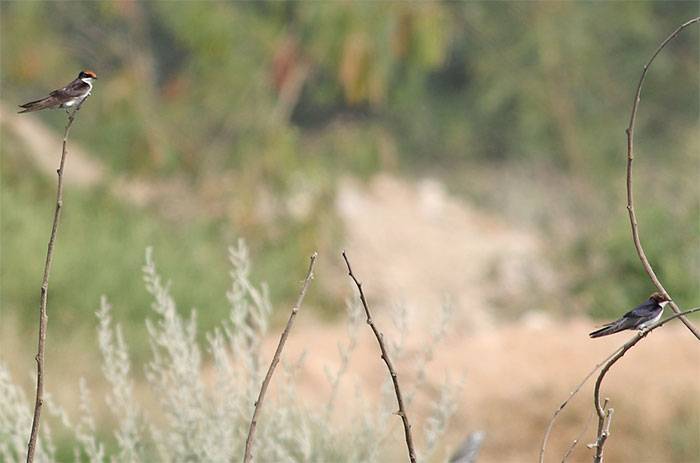
I now have found a total of 5 Wire-tailed Swallows (three records) in Oman in the past two years. I do feel that they’re being overlooked by other birders and it might actually be a rare winter visitor instead of a true vagrant. Interestingly, the two at Raysut were still present by half December and Hanne and Jens found another rare swallow there, a Streak-throated Swallow. And Robert found a second Wire-tailed Swallow at Hilf early December.
I ended this splendid day with Robert near Raysut harbor, where we saw the Crab Plover that Robert found a few days ago, which is a rare visitor to the Salalah area.
Pelagic with Birding Breaks
During my trip, a fellow Belgian birder, Tiemen De Smedt, had already contacted me and we exchanged good birding spots. Tiemen was with Jos van den Berg who was leading an Oman birding trip for BirdingBreaks. I am grateful to Jos and his group for letting me take part on their pelagic trip off Raysut.
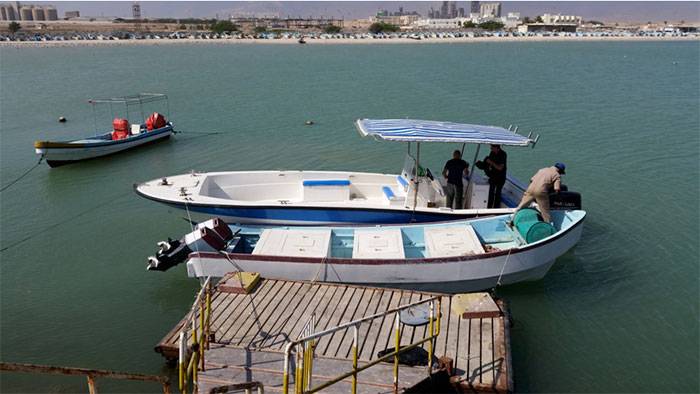
So on the mourning of the 27th we headed out to sea on a pretty comfortable boat. After close but brief encounters with a passing Brown Noddy, we managed to get excellent views of Jouanin’s Petrels once we were on the open sea. But it was during the second half of the mourning that we saw the best birds. First a Wilson’s Storm Petrel that came to forage on the fish that was thrown in the water.
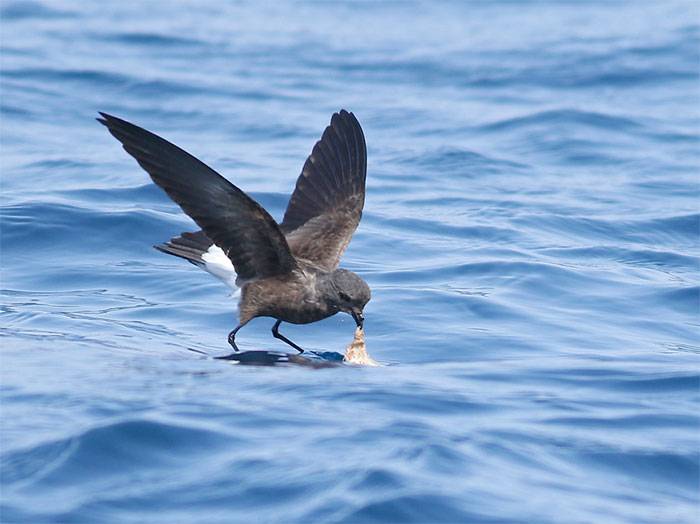
And two hours later I was able to express my gratitude for joining the group by finding a Swinhoe’s Storm Petrel that flew right next to the boat, too much delight of everybody.
The last day
28 November, the last day of this wonderful trip. Even though I did not see anything new for the trip, I can imagine that a first time visitor to Oman would consider this a great day. I started the mourning at Al Mughsayl, were both Baillon’s and Little Crakes were seen. I also found an Arabian Scops Owls in an acacia tree in daylight. Catching the bird on camera proved to be quite challenging as the branches made focusing difficult.
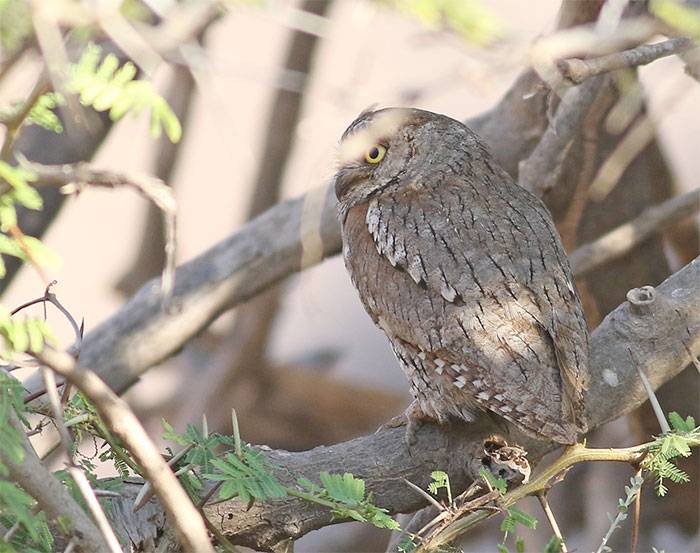
The most inland positioned pool in the wadi also held a White-breasted Waterhen, which was already seen by the BirdingBreaks group the day before. The Long-toed Stint was still present at East Khawr, as was 1 Broad-billed Sandpiper among the many other waders. A visit to the Ad Dahariz Park revealed that the Forest Wagtail was also still present.
Although my flight departed late that night I finished birding at 15h00, satisfied and saturated. There wasn’t anything more to wish for.
Closing remarks
Another wonderful trip had come to an end. And although I visited many sites in Oman during October, November, December and February, so much more is still to be discovered for me. For example, in the desert of Dhofar new farms are coming to life, no birders have visited most of them as of now. The Western part around Al Mazyunah has great potential for new discoveries. The South-Western corner of Oman is greatly under-birded, yet surely holds many great spots. It would be worth staying on Masirah Island for a complete autumn period to monitor migrants and check for rarities.
With the tensions in so many areas in the Middle East, Oman remains a beacon of peace, safety and tranquility. Ideally positioned between Africa and Asia, with vagrants from both parts of the world turning up, as well as lots of excellent local, migrating and wintering birds being present. I hope I’ll be back…
Bart De Schutter
December 2015

Nice report Bart, Oman is on my list of places to visit very soon